Norwegian student pilots train at Air Force Academy
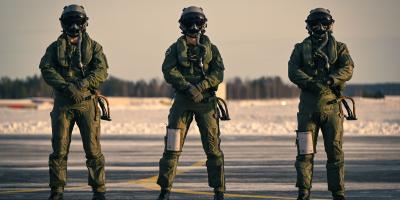
The Air Force Academy received an international addition in autumn 2023 as three pilot trainees and one flight instructor from the Royal Norwegian Air Force arrived in Finland for training cooperation.
The Finnish-Norwegian cooperation in training has now been ongoing for about seven months. At the Air Force Academy in Tikkakoski, the Norwegian student pilots are trained with the BAE Systems Hawk fleet, after which they will continue with F-35 fighter training in the United States as per the training programme of the Royal Norwegian Air Force (Luftforsvaret).
The Finnish and Norwegian Air Forces will operate the same fighter type in the near future when Finland introduces the Lockheed Martin F-35 multi-role fighter into service. The F-35A is the main equipment of the Royal Norwegian Air Force and the aircraft type is to replace the capability of the Finnish F/A-18 Hornet fighters by the end of 2030.
The Norwegian student pilots’ jet training phase, now for the first time in Finland, is likely to show how the current Air Force training prepares pilots for the F-35 fighter’s cockpit.

Norwegian fighter pilots are educated in the United States
The study path of a fighter pilot in the Royal Norwegian Air Force takes altogether six years. In Norway, as in Finland, fighter pilots’ study path begins with airmen’s basic training and elementary flight training. The six-month elementary flight training phase is carried out in northern Norway in Bardufoss with the Saab Safari propeller aircraft. Pilot trainees then study for two years at the Norwegian Air Force Academy (Luftkrigsskolen) on the west coast in Trondheim, after which they transfer to the United States for jet training. Norway trains its fighter pilots in the United States because it has no training system of its own for the jet training phase.
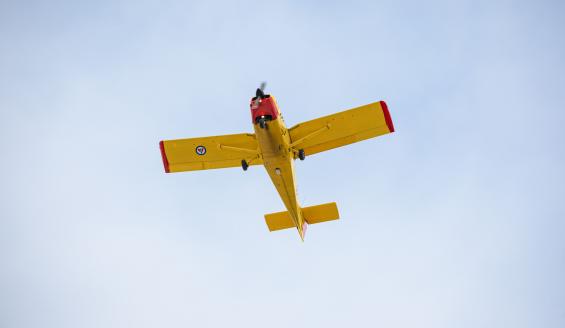
Norwegian fighter pilots begin their flight training on the Saab Safari propeller aircraft. Photo: Fabian Helmersen / Forsvaret
In the United States, Norwegian pilot trainees first head for basic fast jet training and later F-35 multi-role fighter training. Basic flight training is flown on the T-6 turboprop aircraft and T-38 jet trainer at Sheppard Air Base in Texas. The three Norwegian students now studying at the Air Force Academy are completing this training phase in Finland with Hawk jet trainers.
After basic fast jet training, Norwegian students move to F-35 training in Luke, Arizona. Their F-35 training is finalised in fighter squadrons in Norway, where students hone their skills to become combat-ready F-35 pilots.
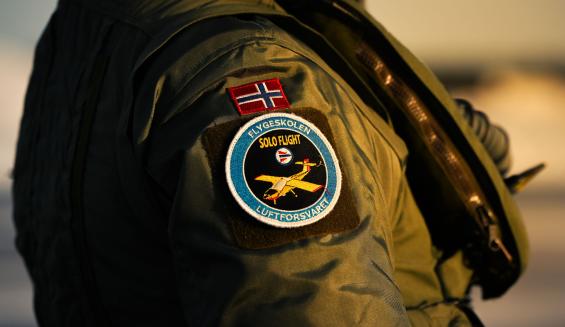
The training of Norwegian F-35 pilots is completed in fighter squadrons at home. Photo: Finnish Air Force
First time at Air Force Academy
The Norwegian student pilots currently studying in Finland enrolled into the jet training phase at the Air Force Academy in October 2023 and their training will finish by the summer of 2025, lasting roughly altogether 18 months.
The Norwegians say that they were pleased with the welcome at the Air Force Academy and feel comfortable at Fighter Squadron 41. In addition to the three pilot trainees, Flight Instructor Major Knut also came to the Air Force Academy for the training cooperation. Major Knut sees that cooperation thus far has been going well.
– The welcome at the Air Force Academy has been very warm and flying has been excellent. I also keep learning things every day, which is one of the great advantages of the flight instructor’s job, Major says.
The Norwegian students knew to expect long training days in Finnish flight training. Until now flight training at the Air Force Academy has met their expectations. Days have been filled with morning briefs, theory instruction, simulator training, independent learning, pre-flight briefs, and flight training with the Grob primary trainer and now also with the jet trainer. The student pilots have noted the requirements of independence and responsibility in Finnish training.
– Naturally there has been and there is a lot to learn and study. We are also given quite a bit of responsibility for our own studies. We have had more demanding as well as lighter phases. The instructors have been good and the so-called learning curve steep as we have moved straight from the propeller plane to the jet aircraft, the student pilots say.
Training in Finland started with the Grob G 115E primary trainer simulator, and the students proceeded to the BAE Systems Hawk fast jet type training at the end of 2023. From early on, their fingers were itching to grasp the controls of the Hawk jet trainer. In February 2024, the Norwegian students flew their first flight with the Hawk.
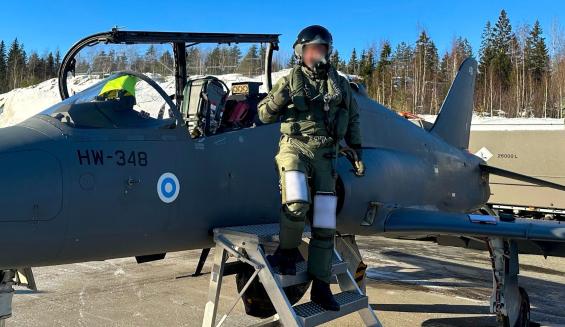
– We were waiting to fly the Hawk and carry out the planned flight lessons. We believed it must be cool and interesting. To fly the Hawk for the first time was an overwhelming and fantastic experience! When accelerating for the first take off, the speed increased even more rapidly than I would have imagined, and the trees flew by super quick. It was very impressive, feeling the power and the maneuverability of the Hawk for the first time. It was an amazing feeling, being in total control of the aircraft and getting to know the Hawk’s characteristics in the air. It is a great honor for us to be the first three Norwegian students to fly Finnish Hawks, the Norwegian trainee pilots say.
In April 2024, the Norwegian student pilots flew their first solo flight with the Hawk.
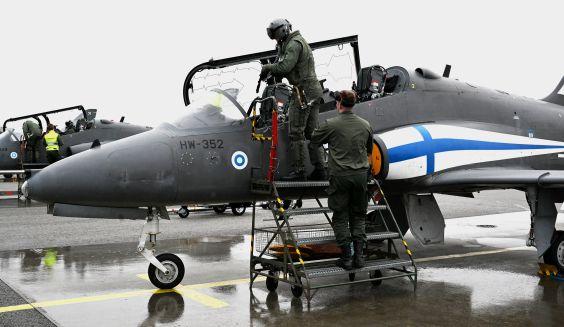
Norwegian student pilot prepares for his first solo flight with the Hawk. Photo: Finnish Air Force
– I recently flew solo with the Hawk, and it was a childhood dream finally come true. I've been looking forward to this for a very, very long time, and I’ve been working hard to make it happen. The first solo flight meant a great responsibility. It was a day to remember for the rest of my life, says the student pilot, who was the first Norwegian flying solo with the Hawk.
Immediately after landing from the first solo flight with the Hawk, the Norwegian colleagues brought the pilot a bottle of soda pop.
– This is Norwegian orange lemonade, called Solo. It's a tradition in Norway for the flight students that you are not allowed to drink this before you fly your first solo flight. It's a Norwegian custom that we brought here, the student pilot says.
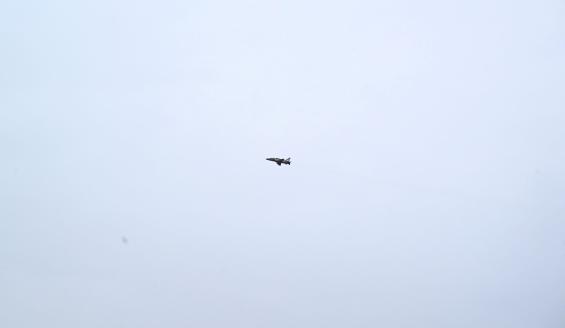
The Norwegian student pilot flew his first solo flight with the Finnish flag painted jet trainer HW-352. Photo: Finnish Air Force
Norwegian flight training lessons for Finns
The Air Forces’ Finnish-Norwegian training cooperation is reciprocal. The Air Force Academy trains Norwegian students, and the Norwegian flight instructor teaches both Finnish and Norwegian student pilots at the Academy.
Flight Instructor Major Knut trains Finnish students with the skills and experience that he indeed has. Major has clocked around 7000 flight hours on various aircraft that he has flown in both the Norwegian Air Force and civil aviation. During his career, Flight Instructor has operated a wide selection of aircraft types: in military aviation, the F-16 fighter aircraft, jet trainers T-37 and T-38A as well as the T-6 turboprop, and in civil aviation, passenger aircraft Boeing 737 as well as helicopters TH-67, UH-60 Black Hawk, Bell 412 and EC225 Super Puma.
Major Knut began flight instruction in 2005 with the F-16 fighter, and he has served in various flight instructor positions. Knut has trained Norwegian fighter pilots in the United States at Sheppard Air Base, where Norwegians get their fast jet training. Knut now flies the Finnish Air Force Hawk jet trainer that is used to train Finnish student pilots to become F-35 pilots.
Major Knut finds Finnish trainee pilots professional, motivated and skilful, and he wishes to be able to contribute some of his experience to Finnish fighter pilot training.
– I appreciate good conversations and the sharing of different experiences and ways of solving challenges. I hope that some of my background and feedback, both positive and negative, can support Finnish training, and also potentially have some positive effects, Major says.
The flight instructor sees Finns heeding the train-as you-fight mentality. Another aspect he has noted is that the Air Force teaches advanced tactics at an early stage of the flight training programme.
English-medium instruction
The training of the Norwegians is carried out according to the Finnish flight training programme but English is the medium of instruction and teaching materials.
– Fighter Squadron 41 and the whole training organisation has done a great deal of work translating key documents and learning materials into the English language. We have not been able to avoid all challenges, but every day we have more teaching materials in English. And we Norwegians are also trying to pick up some Finnish, Major Knut recounts.
The student pilots say they have adapted comfortably among Finns. They converse mainly in English.
– It seems that Finnish students enjoy getting a chance to speak English. It has also been refreshing when some have spoken Swedish with us, the Norwegian trainee pilots say.
When asked about possible learning of the Finnish language, they answer in Finnish.
– Osaan vähän suomea. Kiitos. [I can speak a little Finnish. Thank you.]
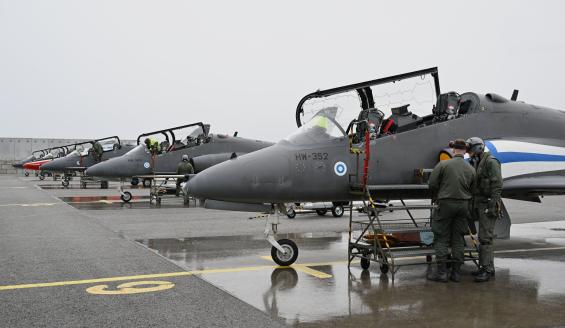
The Norwegian student pilots are trained according to the Finnish flight training programme, but the language of instruction is English. Photo: Finnish Air Force
Cold shock in Finland
The students’ experiences of Finland so far have been literally shivering. Winter temperatures as low as minus thirty have felt shockingly cold to them, and they suppose that Finns surely felt the chill too.
– One extremely cold morning only one of our three cars started, the student pilots say with a chuckle.
The past winter has also affected the Air Force flight training. Due to changeable weather conditions, cracks have formed in the runways. The Air Force has limited training and exercise operations of the jet fleet at its air bases to avoid the risk of loose rocks off the cracked bitumen pavement being pulled into jet engines and causing damage. This winter’s runway issues have also impacted Major Knut’s teaching schedule.
– We have had a few challenges due to some runway damage but I am impressed by the solution minded mentality of the Finnish Air Force.
With ‘solution’, Knut refers to the measures taken by the Air Force to carry on its normal training and exercise activities. The Air Force for example temporarily moved its Hawk flight training from Tikkakoski to Pirkkala for approximately a month so that flight training could continue. Lapland Air Wing’s Hornet fighters have also been used for training and operations conducted from bases other than the home base to avoid unnecessary risks caused by runway damage.
Weather conditions have also surprised the Norwegians in another way. The student pilots have been amazed to discover in what weather conditions flight training is carried out.
– Flight operations go on in surprisingly tough weather conditions. Training in bad weather boosts our self-confidence. We feel that this training takes us to the next level because similar weather conditions await us in Norway, the trainee pilots say.
The flight instructor has also noted the training in demanding weather conditions and winter. In wintertime snowfall, icing and slipperiness can make the weather conditions demanding. Low cloud ceilings form another challenge and often necessitate an instrument approach.
– The Norwegians studying at the Air Force Academy now will have a lot more training than their counterparts in the challenging Nordic conditions as they are trained in Finland and their colleagues in the US, Major Knut states.
Final destination: F-35 cockpit
Major Knut trains his current trainees to become F-35 pilots. Knut says that the basic principles of flying and requirements for basic skills continue to apply when converting to the new aircraft. He does, however, see differences between flying a fourth and fifth generation fighter.
– When operating the F-35 fighter, team work is more important than ever. In addition, an F-35 pilot has to train and develop skills to handle huge amounts of information available in a 5th gen fighter, Major Knut says.
The career of a fighter pilot has been a long-standing dream for the Norwegian students. One finds the challenges and variety fascinating, and adds that, as a fighter pilot, he has the feeling of being part of something bigger. Another recounts his dream since childhood which was also fuelled by a close relative working as a fighter pilot. The third student chimes in saying that flying has been his dream for a long time – he simply had to get into aviation. The F-35 fighter is their end goal that becomes closer every day.
– Once I get to fly the F-35, my dreams come true. It is a huge privilege. Operating the F-35 will require precision and bearing a big responsibility. It is about taxpayers’ property. I’m going all out in the training phase to be ready to fly the F-35, the students say in unison.
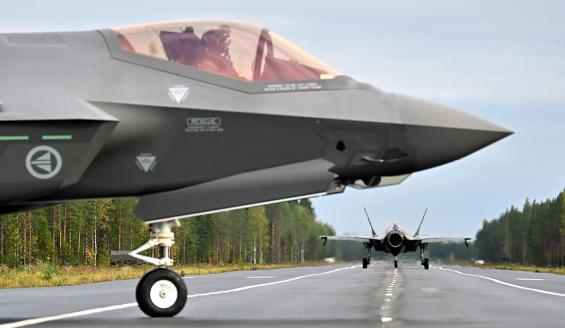
The objective of the Air Force flight training is to train student pilots to become combat-ready F-35 pilots. The image depicts two Royal Norwegian Air Force F-35 fighters at the Tervo road base in the Baana 23 exercise. Photo: Finnish Air Force
The Norwegian pilot trainees have a strong will to defend their country, and they add that their career choice also reflects their desire to help. In military aviation, the student pilots find versatility appealing and the mission is clear in their minds.
– In military aviation, you don’t just fly from the departure point to the destination but conduct diverse tactical missions, and what’s more, teamwork is key. We study and train in peacetime but we are employed to carry out wartime missions. And this we are also willing to do, the students say.
The flight instructor also reminds them of the basic nature of the mission of the Air Force.
– We must remember that the main reason we do what we do is to have strong defence forces to avoid any possible conflict. The F-35 is an awesome aircraft in this role, as a deterrent and peacekeeper!
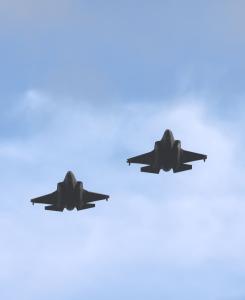
The Norwergian student pilots consider a career as an F-35 pilot appealing and meaningful. The image shows two Norwegian F-35 fighters in the Baana 23 exercise. Photo: Finnish Air Force
When in Finland, do as Finns do
The Norwegain students’ experiences of the Jyväskylä region as a place to live have mainly met their expectations.
– We see Jyväskylä as a smallish town with nice restaurants and bars. We have actually been positively surprised by the wealth of free time activities available, such as skiing and several padel halls. Common services work well, and Jyväskylä seems to be a fairly active student town. We’re excited to see what summer looks like over here, the pilot trainees say.
In advance, the Norwegian students considered Finland similar to Norway as a place to live. They quickly adapted to everyday life in Finland as it was almost like back home in Norway. Life in Central Finland has been good both for studies and free time. Finnish culture has also been internalised by the trio as vast quantities of coffee now gets consumed by them.
One visible difference from Norway is the terrain features – or more or less the lack of them.
– It’s pretty flat over here, the Norwegians say with a smile.
Any opinions regarding the hilliness of Central Finland can be considered relative.
Hopes of continuing training cooperation
On the basis of experiences gained from the training cooperation at the Air Force Academy, the Air Force is considering international training possibilities on a broader scale with a focus on the future.
Instructor Pilot Knut is enthusiastic about the Finnish-Norwegian training cooperation.
– Before coming to Finland last autumn, I was very excited for the opportunity to embark on something new. It was an honour to be selected for the position, and I was looking forward to training both Finnish and Norwegian student pilots. I truly believe it will be an advantage for both Finland and Norway to have fighter pilots in the near future that have worked and trained together.
Major Knut is also pleased about the common aircraft type to be operated both by Finland and Norway.
– The F-35 will work very well in Finland. For Norway and Finland, I hope our two air forces will keep working together to create tactics and develop the F-35 fighter to its full potential.
The Norwegian students appreciate the opportunity to be the first to participate in the Finnish-Norwegian training cooperation.
– Hopefully we won’t be the last! This is a really great opportunity, and hopefully, with Finland’s new NATO membership, similar or other bilateral cooperation will also be seen in the future. We are hoping to meet up with our Finnish counterparts also in the future when we all are F-35 pilots, the pilot trainees say.
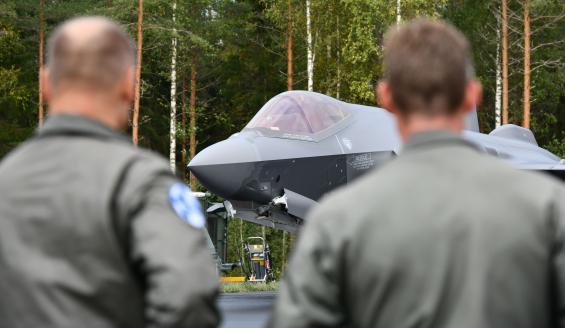
A concrete example of cooperation of the Finnish and Norwegian air forces is last autumn’s Baana 23 exercise where two Norwegian F-35s operated from the Tervo Road Base. This was likely the first time for an F-35 at a road base. The image depicts the Commanders of the Finnish and the Norwegian Air Forces, Major Generals Juha-Pekka Keränen and Rolf Folland observing the Baana 23 exercise. Photo: Finnish Air Force
Together stronger
Nordic cooperation has become even closer with Finland’s and now also Sweden’s NATO membership. The Nordic air forces’ interoperability was recently tested in NATO’s Nordic Response 24 exercise in March, where the detachments from the participating air forces were under the command and control of the Joint Air Operations Centre that had been established in Norway for the duration of the exercise.
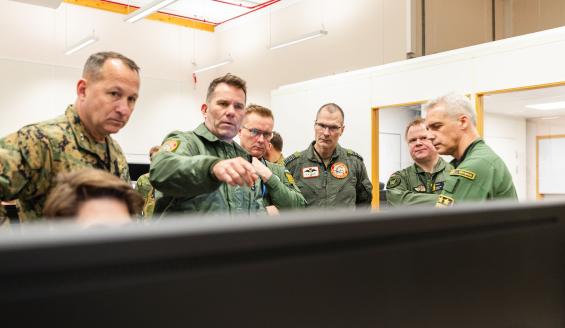
The interoperability of NATO and especially Nordic air forces was tested on a grand scale in the Nordic Response 24 exercise held in March, where air operations were planned and directed by a multinational air operations centre. Photo: Fabian Helmersen / Forsvaret
Major Knut thinks that the air forces of NATO countries work well together.
– We have instant recognition and trust that makes a big difference in the ease of cooperation and operational capabilities. I believe trust is exactly where we will benefit most in the future. When we know each other, it is so much easier to trust each other and make things work, Knut sums up.
The flight instructor is looking forward to possible future cooperation between the air forces.
– I hope and believe that Norway and Finland, together with Sweden and Denmark, will benefit a great deal from their common NATO membership and close-knit cooperation. Our separate air forces are not that huge, but we are very strong when we stand together.

The Norwegians hope to see Finnish-Norwegian training cooperation also in the future. Photo: Finnish Air Force



